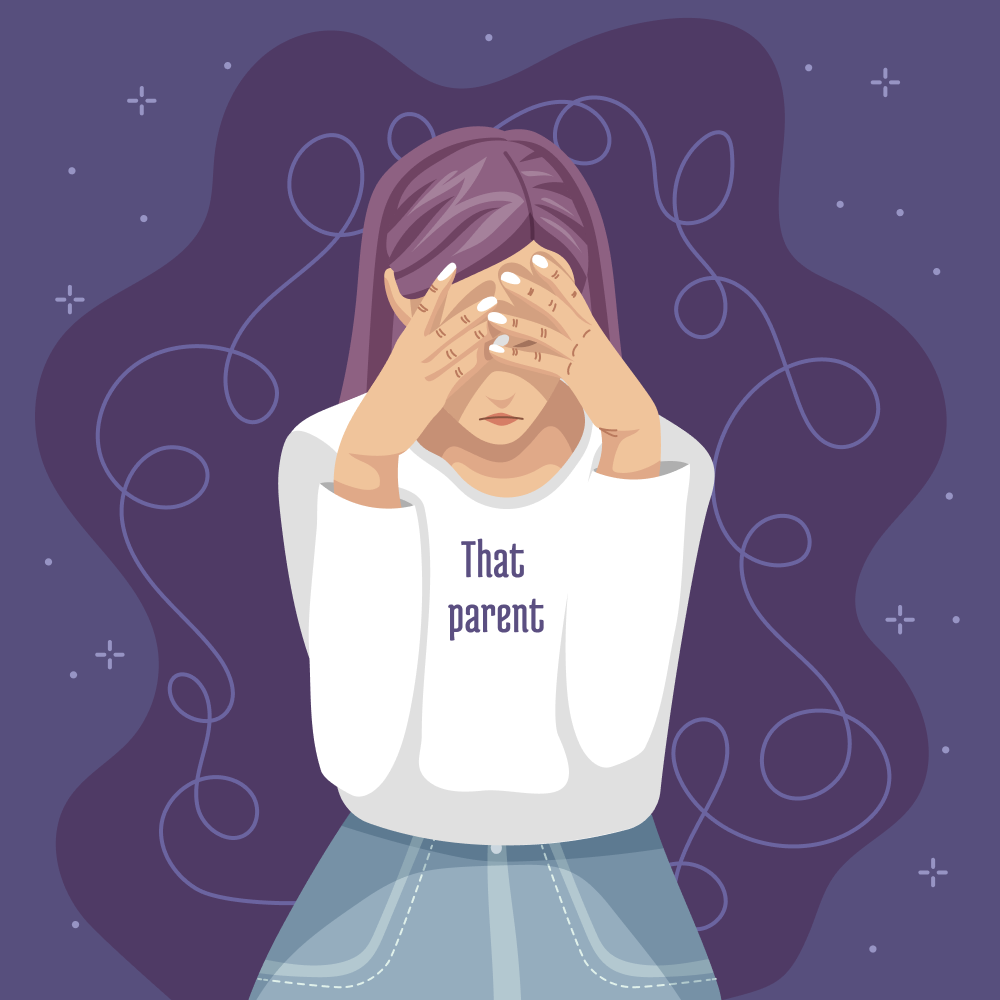Schools are supposed to be spaces of inclusion and support—but for many families, especially those raising disabled or neurodivergent children, advocacy is met with a wall of politeness, professionalism, and performative listening that hides a deeper violence: rhetorical control.
One of the most common tactics is tone policing: the redirection of attention from a parent’s concern to the way they expressed it. Parents—especially women, racialised caregivers, and neurodivergent adults—are routinely told they are “too aggressive,” “too emotional,” or “not collaborative,” even when their communication is urgent, clear, and well-documented. The effect is chilling. Parents begin self-censoring, rehearsing their words, and worrying more about appearing polite than protecting their children.
Closely tied to this is gaslighting: a pattern where school officials deny or reinterpret events in ways that make parents and children question their reality. A child sent home repeatedly may be described as “choosing a break.” A parent’s detailed concern may be met with, “There’s no record of that.” This subtle rewriting erodes confidence and forces families into a defensive position.
These tactics are reinforced through the weaponisation of professionalism. When families speak plainly about harm, they are often dismissed for not using the right tone or not following the right channels. A parent who cries may be deemed unstable. A parent who insists on clarity may be labeled combative. Behind the scenes, these judgments may show up in meeting notes or emails, shaping how the family is treated long after the meeting ends.
Together, these rhetorical tools don’t just defend the status quo—they actively erase the families who try to speak against it.
The illusion of inclusion
Many schools appear inclusive on the surface—equity statements, rainbow posters, land acknowledgements, and “student success” strategies abound. But these symbols often mask deeper harm. This is performative inclusion: when gestures of belonging are used to deflect criticism without changing systems.
A common companion to performative inclusion is the illusion of support. Families may be told that their child is “on a case load” or “receiving indirect support,” yet no one can explain what that actually means. Bureaucratic layers—committees, coordinators, collaborative meetings—can give the impression of action while delaying or avoiding real help. Paperwork mounts, but the child is still excluded, unsupported, or blamed.
Sometimes schools make specific promises—an Educational Assistant (EA), trauma-informed strategies, flexible scheduling—only to walk them back once a crisis has passed. This bait and switch tactic is rarely overt. Supports are replaced with weaker versions or dropped altogether, often without informing the family. When questioned, schools may say, “You must have misunderstood.” But the pattern is clear: real help is offered only under pressure and withdrawn when families begin to trust.
When families push for accountability, they’re often met with empty apologies: polite but hollow statements that express regret without naming harm or committing to change. “We’re sorry you feel that way” or “We’ll take this under advisement” may sound responsive, but they function to reset emotional tone, not repair harm. Without policy changes, staff accountability, or meaningful follow-up, these apologies deepen institutional betrayal.
Even so-called “engagement” processes can be part of the strategy. This is feedback theatre: when schools host surveys, town halls, or focus groups that appear participatory but have no impact on decisions. The performance of listening replaces the practice of accountability.
-
Maybe tomorrow: reflections on goal post shifting and the economics of access
There were accommodations on paper and endless lip-service meetings. But none of it happened in the classroom. And every time we did what was asked—another intake, another form, another plan—the goalpost moved again. We weren’t asking for miracles. We were asking to be…
False choices under pressure
Families are often praised for “collaborating” with schools—but collaboration under duress is not consent.
Many parents are pressured to accept limited, inadequate, or even harmful options: shortened days, isolation spaces, withdrawal from class. These options are framed as solutions—but behind them lies an unspoken threat: accept this, or things will get worse. This is coercive consent: an agreement secured through fear, misinformation, or exhaustion.
Sometimes, the choices themselves are illusions. A school might promise EA support “if needed,” but never staff the role. Or they might offer to “monitor” a student, without clear criteria or follow-up. Families are asked to trust without leverage. When things break down, the school can say, “You agreed to this,” shifting blame to the very people they failed to support.
Even more insidious is the way some schools set some families up to fail. Supports may be offered with conditions that are impossible to meet—like expecting a parent to be on-call during the school day, or requiring strict behavioural compliance from a child who is dysregulated due to lack of accommodation. When those supports collapse, the fault is placed on the family for “not following through.”
Parents are also blamed when their children are in distress. Instead of investigating unmet needs or systemic triggers, schools often turn inward: questioning parenting, suggesting assessments, or calling in outside agencies. Families report feeling surveilled, criminalised, and shamed for advocating. The shift from support to suspicion is not neutral—it is a method of institutional self-protection.
Erasing students, erasing harm
Sometimes, schools don’t say no—they simply make students vanish. If families are too difficult or children deemed too hopeless, the tact changes.
This disappearance script often begins with reduced schedules, moves through chronic absences, and ends with quiet withdrawal or home-schooling. Officially, the student “chose” to leave. Unofficially, they were pushed out by a system that refused to accommodate them. There is rarely a record of exclusion, no acknowledgement of structural failure—just the quiet erasure of a child who didn’t fit.
One of the most powerful tools of disappearance is paperwork. Harm is euphemised or left undocumented altogether. Exclusions are described as “cool-downs.” Aggression by peers is framed as “interpersonal conflict.” Parent complaints are recorded as “differing perceptions.” In some cases, no notes are kept at all. Without an accurate paper trail, there is no accountability—only institutional memory shaped to protect itself.
Families who try to challenge this find themselves up against a system where what happened doesn’t exist unless the school writes it down. They are told, “We’ve given you the full file,” “That’s not what we heard,” or “We followed procedure.” The lived experience of the family disappears behind official narratives.
The price parents pay
At the heart of all of this is emotional labour: the vast, invisible effort parents must expend to navigate these systems without breaking. They must stay calm while their child is harmed. Stay polite while being dismissed. Advocate while being surveilled. Document everything. Anticipate retaliation. Shield their child from harm and themselves from despair.
This labour is especially heavy for mothers, racialised families, and caregivers navigating ableism, sexism, and poverty. Schools expect families to manage the emotional tone of meetings, absorb the impact of systemic failure, and show gratitude for partial or performative inclusion. The result is burnout, health deterioration, social isolation, and economic strain.
And yet, these families persist. Not because the system supports them, but because they have no choice. Because their children deserve better. Because they refuse to disappear.
Toward structural truth-telling
What many families are living through is not a series of unfortunate miscommunications. It is a coordinated, if often unconscious, system of protection—for the institution, not the child. It’s functioning as designed!
Naming these patterns—tone policing, gaslighting, bait and switch, coercive consent, feedback theatre, paperwork erasure—is a first step toward building a better one. Schools cannot begin to repair what they refuse to acknowledge. And families cannot heal until their experiences are made legible—not just in meetings, but in policy, training, and accountability structures.
There is another way. But it begins with telling the truth—even when it’s uncomfortable, even when it implicates people who care. Because harm does not require bad intent. It requires silence, deflection, and the comfort of systems that were never built for the most vulnerable among us.
-
Epistemic silencing of disabled children’s primary caregivers
Epistemic silencing in BC schools discredits mothers’ knowledge, reframes advocacy as aggression, and erases disabled children’s pain, leaving families punished for truth.









